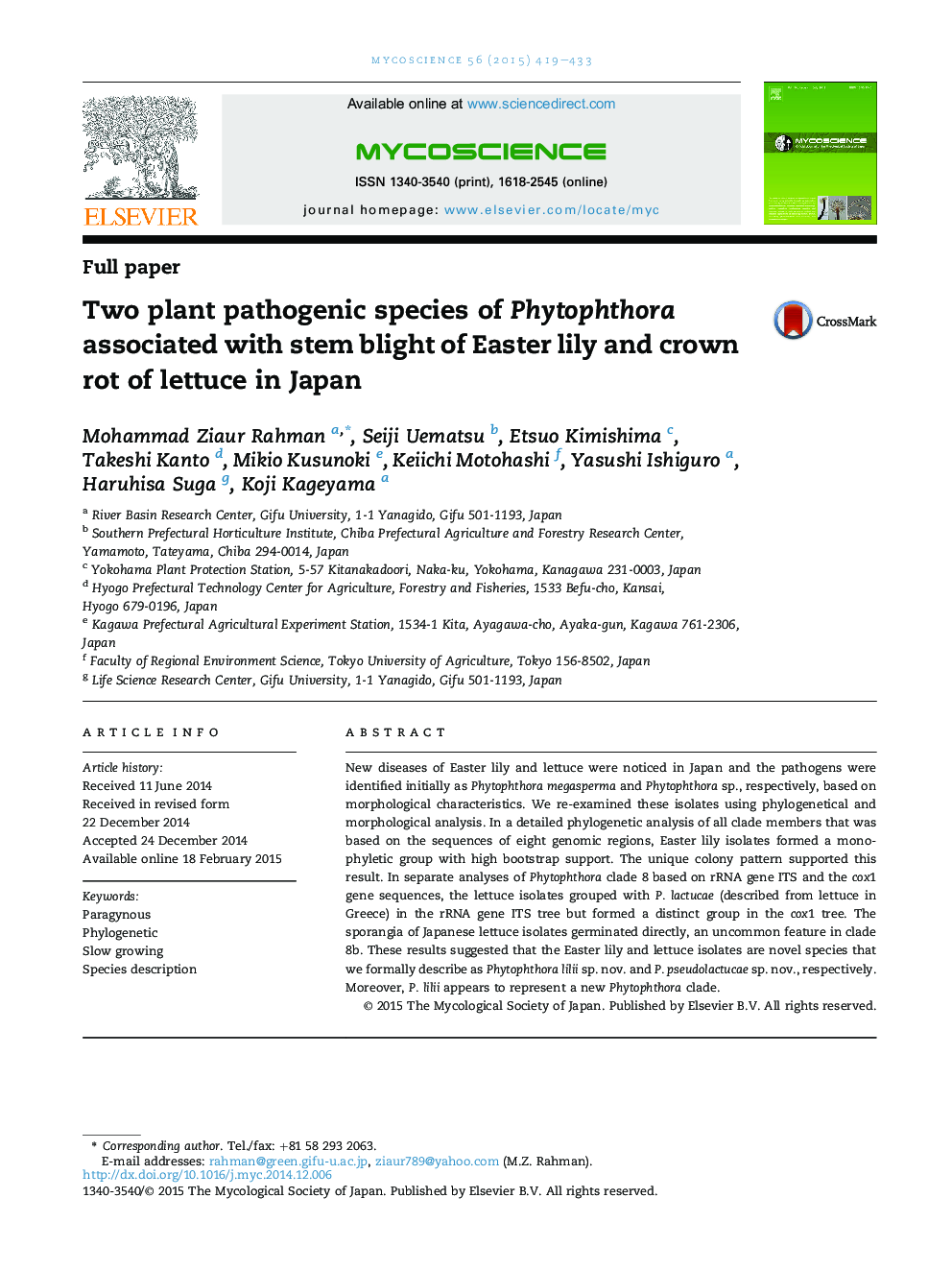| Article ID | Journal | Published Year | Pages | File Type |
|---|---|---|---|---|
| 2060151 | Mycoscience | 2015 | 15 Pages |
Abstract
New diseases of Easter lily and lettuce were noticed in Japan and the pathogens were identified initially as Phytophthora megasperma and Phytophthora sp., respectively, based on morphological characteristics. We re-examined these isolates using phylogenetical and morphological analysis. In a detailed phylogenetic analysis of all clade members that was based on the sequences of eight genomic regions, Easter lily isolates formed a monophyletic group with high bootstrap support. The unique colony pattern supported this result. In separate analyses of Phytophthora clade 8 based on rRNA gene ITS and the cox1 gene sequences, the lettuce isolates grouped with P. lactucae (described from lettuce in Greece) in the rRNA gene ITS tree but formed a distinct group in the cox1 tree. The sporangia of Japanese lettuce isolates germinated directly, an uncommon feature in clade 8b. These results suggested that the Easter lily and lettuce isolates are novel species that we formally describe as Phytophthora lilii sp. nov. and P. pseudolactucae sp. nov., respectively. Moreover, P. lilii appears to represent a new Phytophthora clade.
Keywords
Related Topics
Life Sciences
Agricultural and Biological Sciences
Agricultural and Biological Sciences (General)
Authors
Mohammad Ziaur Rahman, Seiji Uematsu, Etsuo Kimishima, Takeshi Kanto, Mikio Kusunoki, Keiichi Motohashi, Yasushi Ishiguro, Haruhisa Suga, Koji Kageyama,
